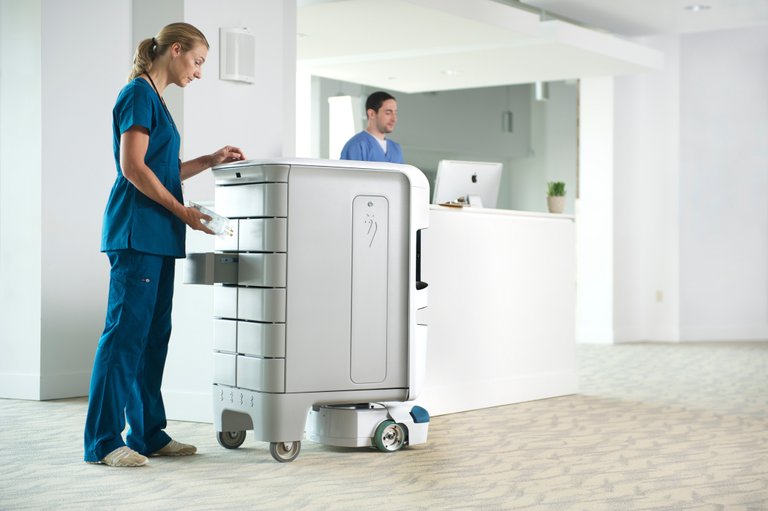
I've written many recent articles about robots and robotics. We've seen them get their citizenship, we've seen them climb stairs and we've even seen them flip hamburgers. But finally I've found a robot that seems more useful than the rest. It's name is Tug and it's the world's first robot nurse. This robot is helping nurses and doctors take care of patients by delivering food and drugs.
In a recent article published in Wired and entitled 'Tug, the Busy Little Robot Nurse, Will See You Now' I learned a few interesting things about this new robot.
The technology in Tug was first developed and applied in self-driving cars which is useful for avoiding obstacles and navigating hallways.
Like a self-driving car, Tug sees its world by spraying it with lasers. That tech is called lidar, the same algorithmically intense stuff at the heart of the dispute between the self-driving car programs of Uber and Google's Waymo. By bouncing lasers off its surroundings, Tug builds a highly detailed 3-D map. Supplementing that is a more traditional map of the hospital in Tug’s head. So it starts at a known point and uses geometry to position itself as it makes its way through the corridors. It can even call elevators to get to other floors.
To get a good look at it in action, take a look at the video below:
The current model may still leave a lot to be desired but it has the ability to perform many of the same tasks a real nurse would typically conduct in a normal shift. It is certain that functionality will improve and this type of robot will be modified to suit all sorts of tasks including hospitality work in hotels.
What do you guys think of Tug? Is this a robot worth investing in? What other applications can you see Tug being useful for?
Thanks for reading!
Source:
Tug, the Busy Little Robot Nurse, Will See You Now - Wired
As a patient, it would be more comforting to see a nurse than some robot named Tug.
Yes. I agree...
Let's see how perform robot nurses in hospitals.
Maybe they are more hotter than normal nurses.
I already see them making efficient use of routine delivery runs.
Me too! Should we be scared or happy?
We should be as scared as we were during the industrial revolution.
I'm still skeptical about Tug being able to function at the level of a human nurse. It just seems like there are so many things, especially those intangibles, that humans can naturally do but we cannot emulate that in robots.
Yes. I agree... No replacement for a human but Tug would make for a good assistant possibly?
Yes. Something like Tug would definitely make the job of a nurse easier and would probably make them more efficient & effective.
Great Article Mate.. :) @techblogger i'm a tech guy too following you 😄
Maybe a hybrid is required?
Tug functionality + one of those life size / style mannequins
Sort of a semi-human 'thing'
Like saudi arabia just gave an ID card to.
img credz: pixabay.com
Nice, you got a 75.0% @pula78 upgoat, thanks to @techblogger
It consists of $8.85 vote and $2.25 curation
Want a boost? Minnowbooster's got your back!
To call @OriginalWorks, simply reply to any post with @originalworks or !originalworks in your message!
i need your help can you help me @techblogger
Technology will indeed change the world! Thanks for sharing
I wouldn’t call it a robot nurse. We have to do a lot of things, like educate patients, make subjective judgements, ask for new physician orders, deal with families, and make clinical judgments that a robot simply isn’t good at.
We also can’t have meds out of human control and outside a locked med room.
So I do see uses for it, and welcome the technology, but it is far from an actual nurse.
A big issue in hospitals is that distribution and requesting supplies can be very inefficient. Ordering extra bags of blood, waiting on someone to bring lab results in, requesting a heart-lung machine, etc. all take time and manpower. With the current shortage on nurses, I think this robot may have a place in today's health care system. I would like to see capabilities like pre-screening patients and fetching supplies during operations implemented into the robot. However, direct patient care needs to still have a human touch.